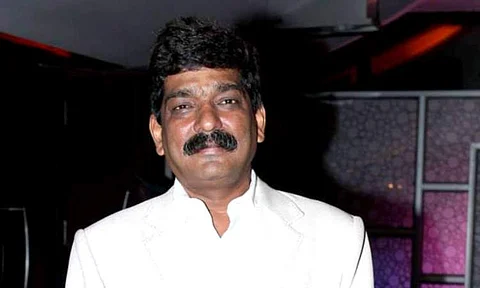

The film industry was in for a shock on Wednesday when it was announced that acclaimed art director and production designer Nitin Chandrakant Desai has passed away. The four-time National Award winner was found hanging at his own ND Studios in Maharashtra’s Karjat. As per reports it was suspected to be a case of death by suicide.
In a career spanning over three decades, Nitin worked with prominent directors like Vidhu Vinod Chopra, Ashutosh Gowariker, Rajkumar Hirani and Sanjay Leela Bhansali. He is to be credited for building the lavish sets for Devdas, 2003 and scouting picturesque locations, as an art director, along with Gowariker for Lagaan, 2001. His journey, however, started on the sets of Shyam Benegal’s television show Bharat Ek Khoj (1988), where he, a fresh graduate of photography from the JJ School of Arts, became an assistant to noted art director Nitish Roy. “He also worked with me on the TV series Chanakya (1991). After working as an assistant with me on 25 to 30 episodes, I handed over the series solely to him,” reminisces Nitish.
Eventually, Nitin went on to design the sets of Vidhu Vinod Chopra’s 1942: A Love Story (1993) and Parinda (1989) and Sanjay Leela Bhansali’s Hum Dil De Chuke Sanam (1999) and Devdas (2002). The latter’s set was touted to be the most expensive at the time. He also worked with maverick director Madhur Bhandarkar for developing the sets of four of his films: Traffic Signal (2006), Fashion (2008), Jail (2009) and more recently Indu Sarkar (2017). “He brought the term ‘art director’ into the limelight,” shares Madhur. “He became the reason why art directors were valued so much on sets. When I approached him to build a set for Traffic Signal, I told him I was short on budget. He was still very accommodating and built me one that looked so real, people used to call me up and ask me if we shot in Town (South Mumbai).”
Crediting Nitin for his valuable creative inputs, Madhur also shared an incident when the art director brought Delhi’s Connaught Place to Maharashtra. “For Indu Sarkar I needed to show Delhi at the time of the Emergency in the 1970s. He turned the Traffic Signal set and made it look like Connaught Place. I was shocked. It was so realistic that when I sent photos from there to my friends in Delhi, they asked me if I was in the city!”
But more than his artistic acumen, Madhur believes what made him great was his willingness to work with new directors. Abhishek Chaubey, known for helming films like Ishqiya (2010), Udta Punjab (2016) and Sonchiriya (2019), agrees. “I reached out to him for my first film Ishqiya and although he had other big projects in the pipeline, he agreed to do a debut director’s film,” he says. “He was extremely kind and had an impeccable eye for detail. I remember we used to walk on the sets of the film, for which he replicated UP in Maharashtra, and he could pick up even the minutest errors.”
Abhishek also spoke about how Nitin painstakingly built a bridge over a river for Ishqiya. “The bridge couldn’t remain steady and crumbled twice because of the water pressure. He still made it for me the third time.”
Director Anees Bazmee, who worked with Nitin on Pyaar To Hona hi Tha (1998), said that the art director made an airplane for him that was very adjustable to shoot in. “It looked so real and yet its walls and top could be removed for better camera movement. People used to visit to see the set,” he reminisces.
As per reports, Nitin was under financial crisis and had a debt of over Rs 250 crore. Insolvency proceedings were initiated against the late art director only last week. While, Nitish, Madhur, Abhishek and Anees unanimously stated that they had no knowledge of the debts, Nitish added, “He spoke to me last time on the occasion of Guru Purnima and sought my blessings. I didn’t know he would take such a drastic step.”